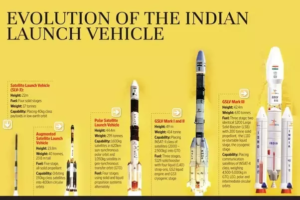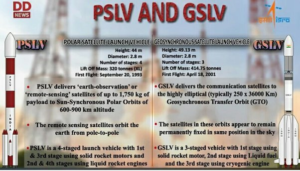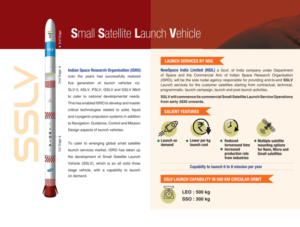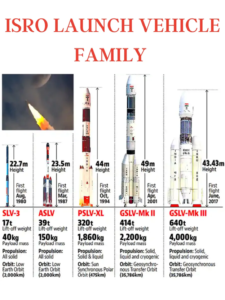ISRO places nine satellites in orbit, one from Bhutan
Why in News?
Recently, the Indian Space Research Organisation (ISRO) has successfully launched the Polar Satellite Launch Vehicle (PSLV) C54 from the Satish Dhawan Space Centre in Sriharikota, Andhra Pradesh.
- This was the 56th flight of PSLV, which marks the final mission for the year for PSLV-C54 rocket.
What are the Satellites Launched?
- Nano Satellite-2 for Bhutan (INS-2B):
- About:
- INS-2B satellite is a collaborative mission between India and Bhutan with two payloads.
- NanoMx, a multispectral optical imaging payload developed by Space Applications Centre (SAC)
- APRS-Digipeater which is jointly developed by DITT-Bhutan and URSC was successfully deployed.
- Significance of INS-2B:
- It will provide high-resolution images to Bhutan for the management of the country’s natural resources.
- The launch of the new satellite is part of India’s efforts to back Bhutanese King Jigme Khesar Namgyel Wangchuck’s plans to use advanced technology, including ICT and space technology, for the development of Bhutan.
- The collaboration also fits in with India’s “neighbourhood first” policy.
- Anand:
- The Anand three axis stabilized Nano satellite is a technology demonstrator for miniaturized electro-optical payload and all other sub-systems like TTC, power, onboard computer and ADCS from Pixxel, India was also placed in the orbit successfully.
- Astrocast:
- Astrocast, a 3U spacecraft, is a technology demonstrator satellite for the Internet of Things (IoT) as the payload. There are 4 nos. of Astrocast Satellites in this mission. These spacecrafts are housed within an ISISpace QuadPack dispenser.
- The dispenser protects the satellite from contamination.
- Thymbolt Satellites:
- The Thybolt is a 0.5U spacecraft bus that includes a communication payload to enable rapid technology demonstration and constellation development for multiple users from Dhruva Space using their own Orbital Deployer with a minimum lifetime of 1 year.
- EOS-6:
- Earth Observation Satellite-06 (EOS-06) is the Oceansat series’ 3rd-generation satellite envisaged to observe ocean colour data, sea surface temperature and wind vector data to use in oceanography, climatic and meteorological applications.
- The satellite also supports value added products such as potential fishing zones using chlorophyll, Sea Surface Temperature (SST) and wind speed and land based geophysical parameters.
- INS-2B satellite is a collaborative mission between India and Bhutan with two payloads.
- About:
UPSC Civil Services Examination, Previous Year Questions (PYQs)
Q1. With reference to India’s satellite launch vehicles, consider the following statements: (2018)
- PSLVs launch the satellites useful for Earth resources monitoring whereas GSLVs are designed mainly to launch communication satellites.
- Satellites launched by PSLV appear to remain permanently fixed in the same position in the sky, as viewed from a particular location on Earth.
- GSLV Mk III is a four-staged launch vehicle with the first and third stages using solid rocket motors; and the second and fourth stages using liquid rocket engines.
Which of the statements given above is/are correct?
(a) 1 only
(b) 2 and 3
(c) 1 and 2
(d) 3 only
Ans: (a)
Q2. With reference to ‘Astrosat’, the astronomical observatory launched by India, which of the following statements is/are correct? (2016)
- Other than USA and Russia, India is the only country to have launched a similar observatory into space.
- Astrosat is a 2000 kg satellite placed in an orbit at 1650 km above the surface or the Earth.
Select the correct answer using the code given below:
(a) 1 only
(b) 2 only
(c) Both 1 and 2
(d) Neither 1 nor 2
Ans: (d)
Q.3 Consider the following statements: (2010)
The satellite Oceansat-2 launched by India helps in
- estimating the water vapour content in the atmosphere
- predicting the onset of monsoons.
- monitoring the pollution of coastal waters.
Which of the statements given above is/are correct?
(a) 1 and 2 only
(b) 2 only
(c) 1 and 3 only
(d) 1, 2 and 3
Ans: (d)







